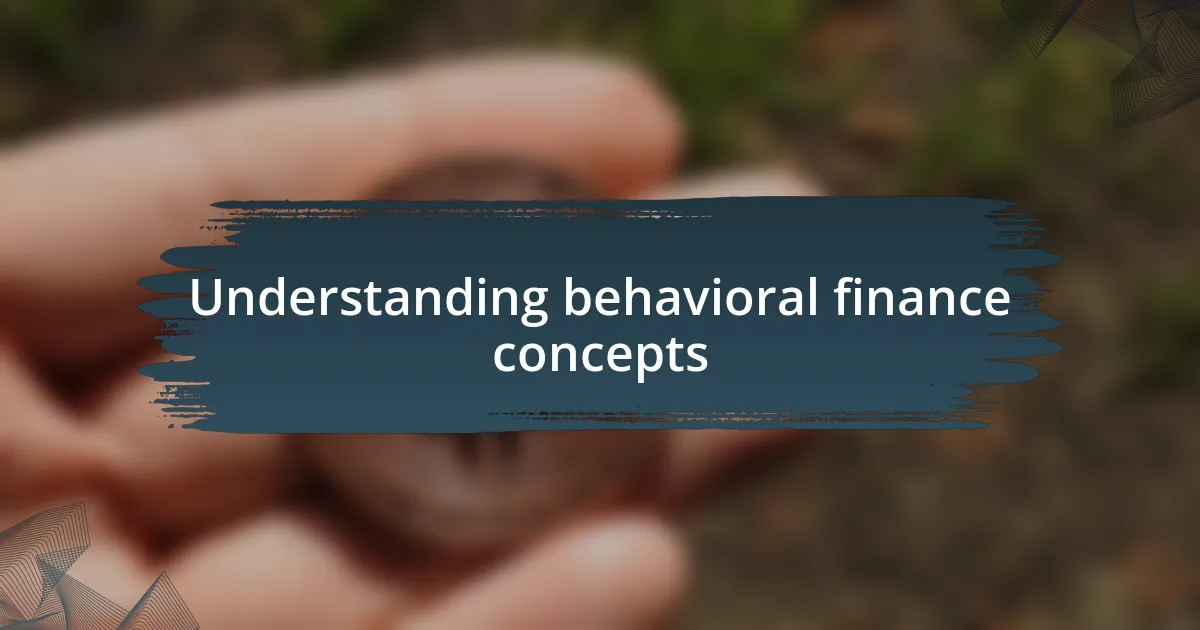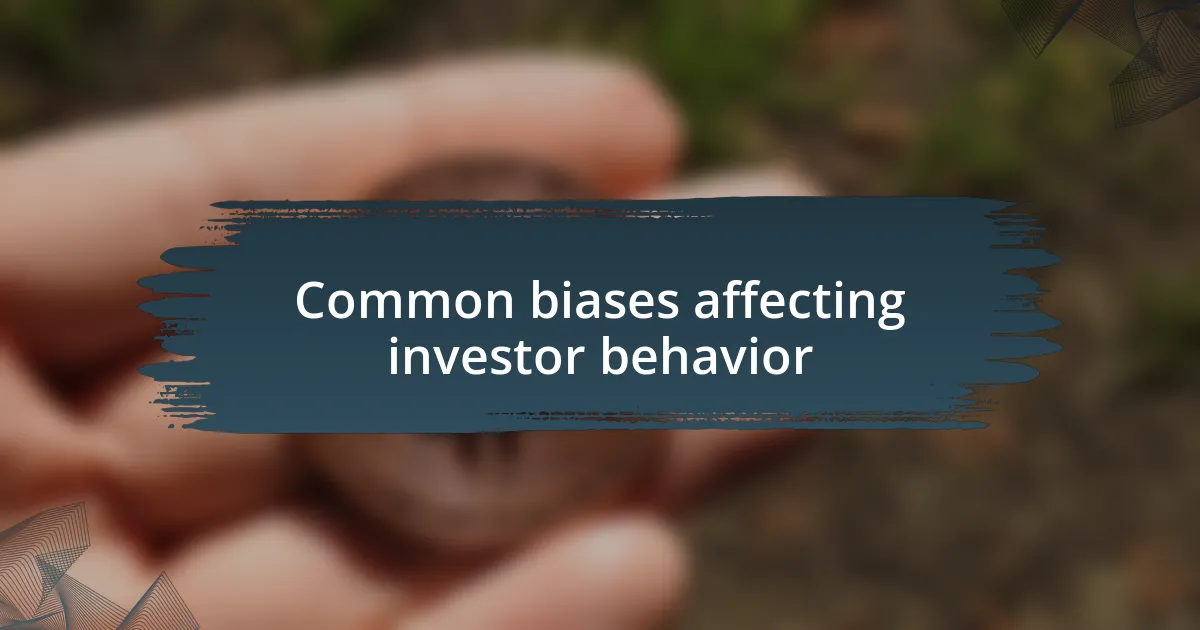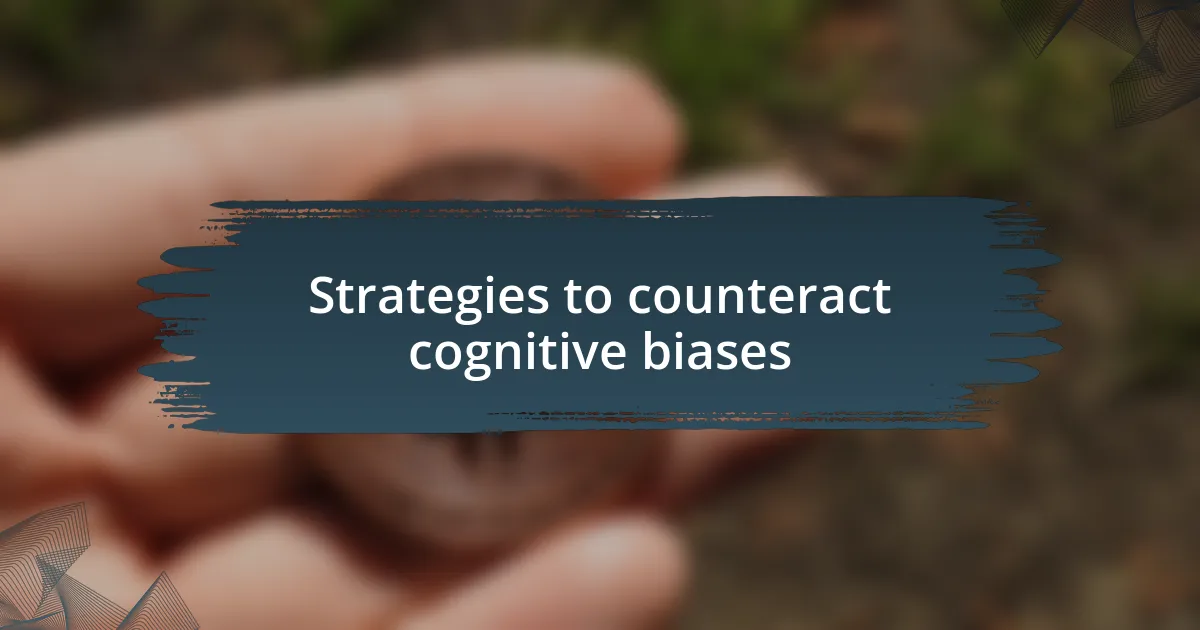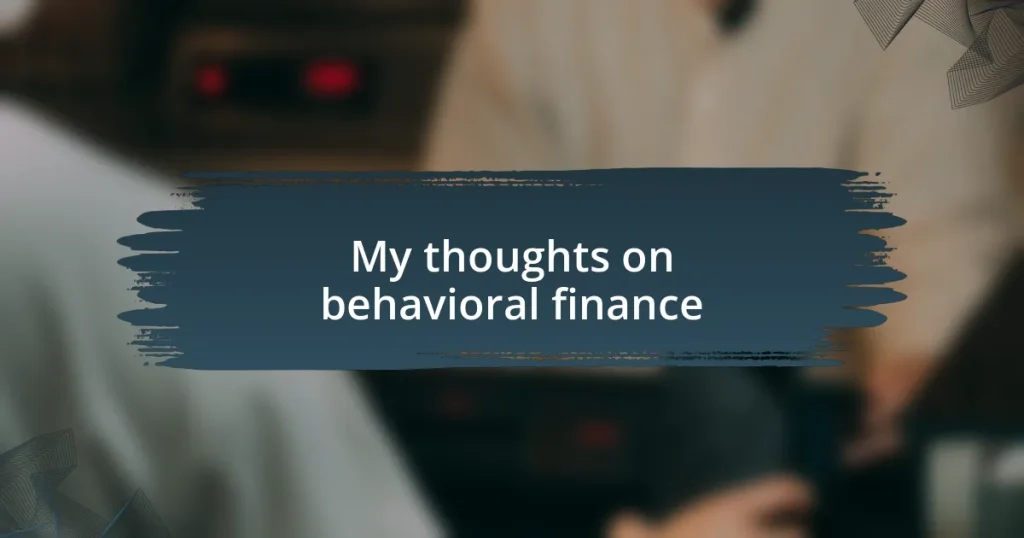Key takeaways:
- Behavioral finance explores how emotions and biases, such as fear and overconfidence, impact investment decisions.
- Common biases include loss aversion, herd behavior, and confirmation bias, which can lead to irrational choices and missed opportunities.
- Strategies to counteract biases consist of creating a clear investment plan, seeking diverse perspectives, and practicing mindfulness to enhance decision-making.

Understanding behavioral finance concepts
Behavioral finance delves into the psychology behind investors’ decisions, exposing how emotions and biases can cloud judgment. I remember a time when I let fear dictate my investment choices. Have you ever sold a stock in a panic, only to see it rebound shortly after? This common fear-driven action illustrates how our emotional responses often lead to suboptimal financial decisions.
Another fascinating aspect is the concept of overconfidence. I’ve seen investors, myself included, get caught up in a wave of self-assurance, convinced they can predict market trends. This belief can lead to significant losses when the reality of unpredictable market dynamics sets in. It raises a critical question: how often do we mistake our confidence for competence in the financial realm?
Anchoring is another intriguing behavioral finance phenomenon, where people rely too heavily on the first piece of information they encounter. I’ve caught myself fixating on a stock’s initial price rather than considering its current value or future potential. This tendency can skew perception and may prevent us from making rational decisions based on a complete picture. By recognizing such biases, we can better navigate the often turbulent waters of investment.

Common biases affecting investor behavior
Behavioral finance reveals several biases that can significantly impact an investor’s decision-making process. One that often surfaces is loss aversion. I distinctly remember a time when I hesitated to sell a losing stock, despite clear signals suggesting I should. That unease, tied to the fear of realizing a loss, kept me clinging to it far too long, ultimately deepening my financial wound. Have you experienced a similar reluctance to cut your losses?
Another prevalent bias is herd behavior, where individual investors follow the crowd, often leading to irrational market trends. I reflect on moments when my friends and I jumped on a trending stock, driven more by enthusiasm than research. This frenzy ultimately taught me the hard lesson that following the herd can blind us to glaring risks and misjudgments in investments.
Finally, confirmation bias deserves our attention, as it causes us to seek information that supports our preexisting beliefs. I used to find myself focusing solely on market analyses that echoed my optimistic views while disregarding opposing perspectives. This selective attention can foster a false sense of security that may lead to poor investment decisions. Learning to question my viewpoints has transformed my approach to investing.
| Bias | Description |
|---|---|
| Loss Aversion | The tendency to prefer avoiding losses over acquiring equivalent gains, leading to poor decision-making. |
| Herd Behavior | The inclination to mimic the actions of a larger group, often resulting in impulsive investments. |
| Confirmation Bias | The habit of only seeking out information that supports one’s existing beliefs, leading to skewed judgment. |

Strategies to counteract cognitive biases
In my experience, one effective strategy to counteract cognitive biases is to establish a clear investment plan and stick to it. When the market emotions ran high and volatility surged, I often felt the urge to deviate from my carefully crafted strategy. But I learned that having predefined rules, such as setting specific buy or sell triggers, helped me hold steady during turbulent times. Wouldn’t it be reassuring to have a roadmap to guide you through market chaos?
Another approach is to regularly seek out diverse perspectives. I remember a time when a colleague challenged my bullish view by presenting data I hadn’t considered. Initially, I felt defensive, but embracing differing opinions ultimately enriched my understanding. It’s akin to polishing a gem—each varied viewpoint adds luster, revealing facets I might otherwise overlook. Could inviting constructive criticism open doors you didn’t know existed?
Finally, practicing mindfulness can significantly enhance one’s decision-making. During moments of anxious uncertainty, I’ve made it a habit to take a step back and breathe, allowing time to evaluate my emotions before acting. This simple pause often helps me recognize whether I’m being swayed by fear or excitement rather than logic. Have you ever noticed how a moment’s reflection can sharpen your perspective and lead to more rational choices?











